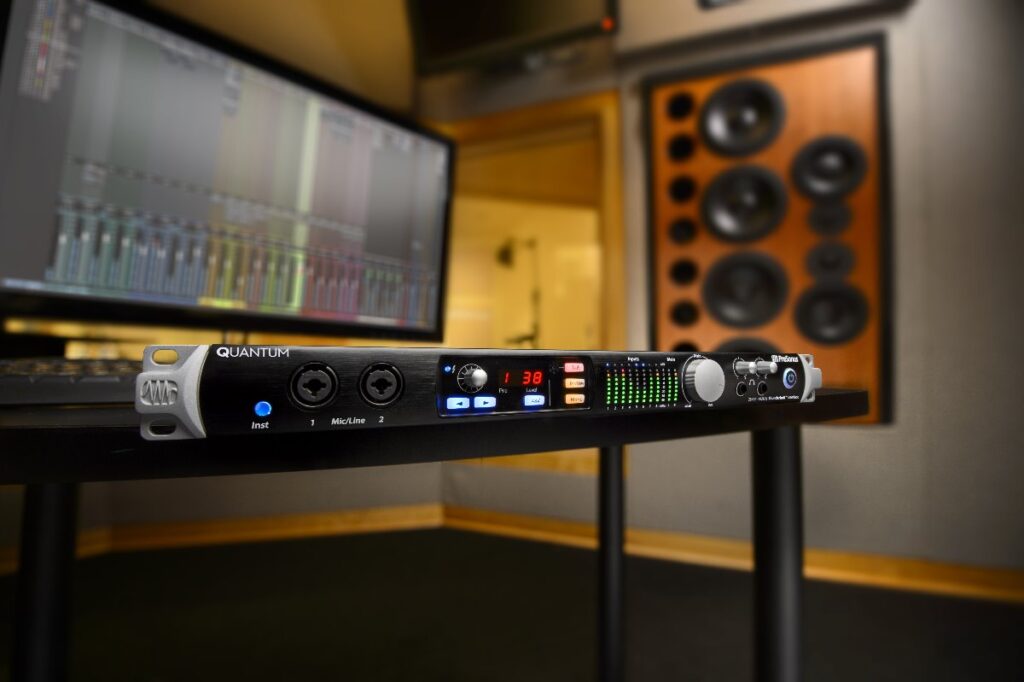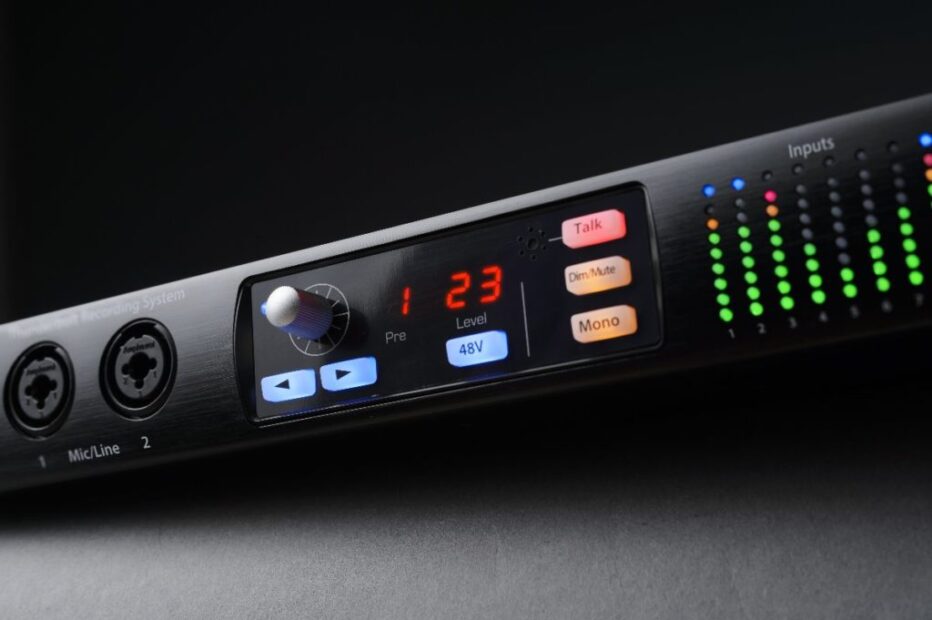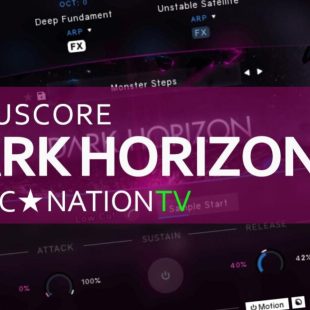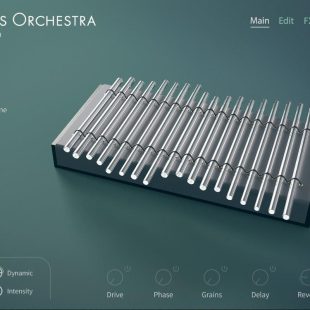PRESONUS QUANTUM – AT THE SPEED OF LIGHT
As I always state when reviewing PreSonus products, I’m a bonafide fan. Since 1995 the company has established itself as a player in the semi-pro audio production arena. Initial PreSonus interfaces, inevitably named ‘Fire something-or-other’, had front panels milled from blocks of aluminium. While they worked and connected to a computer with a Firewire cable, they utilised Yamaha’s luckless mLan protocol. mLan was clever in that it could transport audio, MIDI data, and wordclock over a Firewire cable, but the patching software was archaic, and PreSonus moved on to ‘proper’ Firewire.

Review by Brad Watts
The PreSonus Quantum leaves Firewire and USB behind with Thunderbolt 2 for data transport. It’s a vastly quicker machine than the previous USB 3.0 Studio 192. The Quantum can be daisy-chained via Thunderbolt for up to 96 channels over four units, something Firewire promised but never delivered. The Quantum offers eight mic/line inputs and eight line TRS outputs, with expansion via ADAT optical. SMUX is supported for 96kHz recording across all available inputs – 16 ADAT channels at 44.1/48kHz, and eight at 88.2/96kHz.
The Quantum represents PreSonus’s first stray from its signature blue/silver colour scheme in exchange for black – how very rock. On cursory inspection, the only real change from Studio 192 models is the addition of MIDI ports. A single input and output is plenty nowadays with many users using virtual instruments.

So apart from MIDI ports and a flashy black finish, are there advances with the Quantum interfaces, or have they simply revamped Studio 192 units with Thunderbolt 2 ports?
The rear of the Quantum presents six XLR/TRS combo inputs and eight TRS ¼-inch outputs. These are flanked by TRS ¼-inch main outputs followed by S/PDIF coaxial I/O and wordclock I/O. Next is the ADAT I/O, and above are two Thunderbolt 2 ports. The first is for connection to computers, and the second is for chaining additional Quantum units. Out front are two combo connectors for high-impedance signals or mics.
As for the sound of the XMAX pre’s, as I mentioned in my review of the Studio 192, I have a set of these Class-A units myself – I like them. They distort guitars quite well.
Mimicking the Studio 192, the Quantum includes control room features. The front panel has a large main output level control and a single gain level control flanked by left/right buttons. The left/right buttons scroll through the eight preamp input gains, and to engage 48V power to the selected pre. A ninth ‘c’ setting adjusts gain for the built-in talkback mic. Preamp levels and individual 48V power for each mic pre can be set from within your DAW using MIDI controller information. A shrewd integration of the line and main outs are DC coupled. This allows triggering and control voltage (CV) signals to be sent out to analogue synths and sequencers from your DAW.
Software
PreSonus supply an app for setting monitor paths, headphone routing and ancillary options such as talkback setups. PreSonus’s Universal Control also controls preamps, setting headphone output sources, and S/PDIF behaviour, along with metering and a spectrum analyser. Now, here’s where I realised a major difference between the Studio 192 devices and the Quantums – there’s no onboard DSP, and no internal mixing.
I wrongly assumed PreSonus would include its ‘Fat Channel’ signal processing – the same DSP tools used throughout its StudioLive consoles and Studio 192 interfaces. Currently, Quantum has the lowest latency of any audio interface on the market and had the Fat Channel DSP been added the latency would have been much higher
This may steer potential buyers away from the Quantum, especially if they’re hoping to use the Quantum in live recording situations, but then it may not. It would depend greatly upon whether the host computer can supply enough processing via the DAW in use. It’s horses for courses, but without an internal mixer and mixer software you’re bound to a DAW for bussing.
PreSonus has given DSP the boot to keep the processing path as slippery as an eel. At 96kHz and with a buffer setting of 32 in Logic Pro X the resulting roundtrip is meagre. With a quick playback and recording of a spike at these settings, the latency came out at around 1.38ms. That’s extremely low, and virtually undetectable in a live monitoring situation. Bump down to 44.1kHz and the roundtrip comes in at two milliseconds. Again, exemplary latency.

Hardware
The Quantum improves specifications over the Studio 192. The X-MAX mic preamps offer EIN of <131dBu over <128dBu, yet frequency response is 20Hz to 40kHz as opposed to the Studio 192’s 10Hz to 40kHz. The dynamic range of the instrument inputs is >106dB (A-weight) compared with the Studio 192 at >110 dB, with the line inputs greatly improved at >118dB (A-weight). Main monitoring and line outputs also see an improvement. Dynamic range is >118dB as opposed to the Studio 192 at >112dB and the total harmonic distortion is reduced from 0.005% to 0.0035%. ADC and DAC dynamic range is 120dB. The resulting audio quality is impressive and goes to show PreSonus isn’t resting on its laurels.
So who’s going to find the Quantum the ideal interface solution? I’d imagine those looking for quality I/O and an all-in-one solution. Super-low latency, MIDI, DAW programmability, macOS and Windows compatibility, and throw-in CV triggering – it feels like this could be the interface for the analogue synth brigade.
At a paltry $1900 or so, you’re gaining scads of functionality: superb recording and monitoring conversion, and a control room system and talkback. The Studio 192 was great, but the Quantum is so much more.
Key Features
- Turn on a dime latency
- Exceptional audio quality
- MIDI and CV
- Ample I/O
RRP: $1899 NZD
Full details on the PreSonus site www.presonus.com

About the reviewer:
Brad Watts has been a freelance writer for numerous audio mags, has mastered and mixed various bands, and was deputy editor of AudioTechnology in Australia. He is now a digital content manager for Content and Technology.






